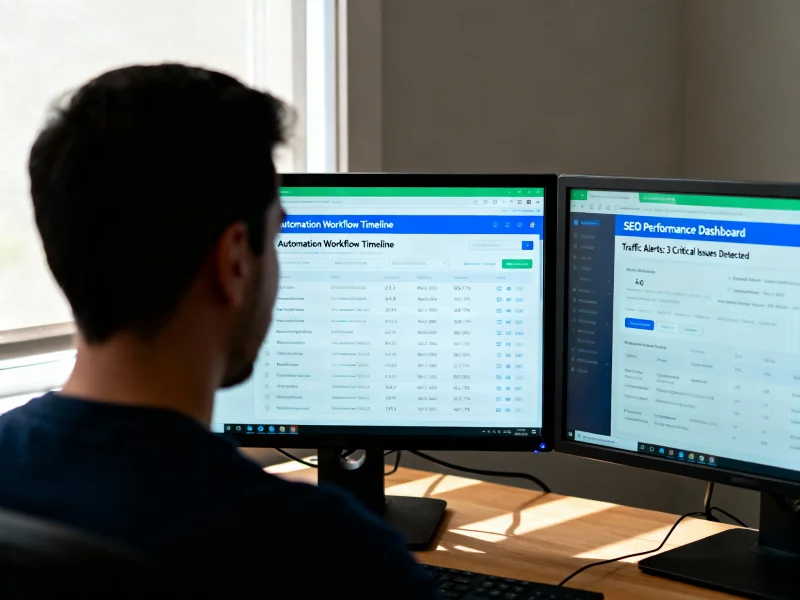The Art Of Local Advertising: Geo-Targeted Ads In Internet Marketing Services
Do you want to take your local advertising game to the next level? Look no further than geo-targeted ads in internet marketing services. By utilizing this technique, you can ensure that your advertisements are reaching the right audience at the right time and place.
Geo-targeting allows you to narrow down your target audience based on their location, making it an incredibly effective tool for local businesses looking to attract nearby customers. But how exactly does it work, and what steps do you need to take in order to create compelling ads that will resonate with your audience? In this article, we'll dive into the art of geo-targeted advertising in internet marketing services and provide you with actionable tips for success.
Understanding Geo-Targeting in Internet Marketing
You'll love how geo-targeting in internet marketing lets you reach potential customers exactly where they are, like a digital billboard that only shows up for people within a certain radius. Gone are the days of generic ads that don't resonate with your audience. With this technology, you can tailor your message to specific locations, interests, and demographics.
By tapping into the data gathered from users' IP addresses or GPS coordinates, you can deliver ads that are relevant to their needs. For instance, if someone searches for "pizza delivery"on their smartphone while in your area, your restaurant's ad could show up at the top of their search results. This not only increases the chances of them ordering from you but also helps build brand awareness.
Identifying your target audience is key to successful geo-targeting. You need to understand who they are, what motivates them and where they spend their time online. By doing so, you can craft a message that speaks directly to them and drives conversions. So let's dive deeper into how to do just that…
Identifying Your Target Audience
Understanding your audience's needs and preferences can help you create effective campaigns that resonate with them. Before launching your geo-targeted ads, it's essential to identify who your target audience is. Here are five things to consider when identifying your target audience:
- Demographics: Consider age, gender, income, education level, occupation, and marital status.
- Psychographics: Look at personality traits, values, interests, hobbies, lifestyle choices.
- Pain points: Identify their biggest challenges and problems that they're looking for solutions to.
- Media consumption habits: Understand where they spend most of their time online - which websites or social media channels do they frequent?
- Buying behavior: Analyze how they make decisions when purchasing a product or service.
By understanding these factors about your audience, you'll be able to tailor your ad content to speak directly to their needs and preferences. This will increase the chances of them engaging with your ads and taking desired actions on your website.
Creating compelling ad content is the next step in crafting an effective geo-targeted advertising campaign. Your ad should have a clear message that aligns with what matters most to your target audience. By using persuasive language and including strong calls-to-action in the copywriting of your ads along with eye-catching visuals that appeal emotionally to users' pain points or desires related specifically towards solving those same issues customers are facing when seeking solutions from businesses like yours - all while staying within budget constraints set by marketing goals!
Creating Compelling Ad Content
Crafting a message that resonates with your audience is crucial for the success of your geo-targeted ad campaign. Your ad content must be persuasive and engaging enough to grab the attention of your target market. In creating compelling ad content, you need to understand what motivates your audience and tailor your message accordingly.
Start by identifying the pain points or challenges that your prospects face. Use this information as a basis for developing solutions that can benefit them. Highlight these benefits in a clear and concise way, focusing on how they can solve their problems or improve their lives.
Once you've crafted an impactful message, it's time to choose the right platforms to reach your audience effectively. By selecting platforms where your prospects are most active, you can increase the chances of conversion and maximize return on investment. With compelling ad content and strategic platform selection, you're sure to achieve success in local advertising through geo-targeted ads!
Choosing the Right Platforms
When choosing the right platforms for your geo-targeted ads, consider Google AdWords, Facebook Ads, and local directories. Google AdWords allows you to target specific keywords and locations, while Facebook Ads offers advanced targeting options based on demographics and interests. Local directories such as Yelp or Tripadvisor can also be effective for reaching a highly engaged audience in your area. Take the time to research these platforms and determine which ones will best serve your advertising goals.
Google AdWords
With Google AdWords, you can easily target local customers searching for your products or services in your area. AdWords allows you to choose specific keywords that trigger your ads to appear when someone searches for those terms. This means that when someone searches for "pizza delivery near me,"your pizza shop's ad could show up at the top of the search results.
Another benefit of using Google AdWords is the ability to set a budget and only pay when someone clicks on your ad. This means you won't waste money on ads that don't generate any clicks or leads. Plus, with detailed reporting and analytics, you can track the success of your campaigns and make adjustments as needed. So, if you want to reach local customers through targeted advertising, Google AdWords is a great option to consider.
Now let's move on to Facebook Ads, another powerful tool for geo-targeted advertising.
Facebook Ads
You can utilize Facebook Ads to effectively reach potential customers in your area by creating custom audiences based on their location, interests, and behaviors. This powerful targeting tool allows you to create ads that are specifically tailored to the needs of your local audience. For example, if you own a coffee shop in downtown Los Angeles, you could target people within a certain radius of your business who have expressed an interest in coffee or frequent similar establishments.
Facebook Ads also provide various ad formats such as photo, video, carousel or slideshow ads which allow you to showcase products or services visually. You can even add a call-to-action button that directs viewers to your website or landing page where they can learn more about what you offer. With all these options at hand, it's no wonder why businesses use Facebook Ads as part of their marketing strategy for local advertising. Now let's move onto another effective way of reaching local customers: local directories.
Local Directories
If you're looking to increase your business's visibility in your community, one effective strategy is to ensure that it's listed on popular local directories. These directories are online platforms where businesses can create a profile, add their contact information, and even receive reviews from customers. By being present on these directories, you not only increase the chances of potential customers finding you but also boost your credibility as a legitimate local business.
Some examples of popular local directories include Yelp, Google My Business, and Yellow Pages. It's important to note that each directory has its own requirements for listing a business and guidelines for managing reviews. It's crucial to follow these guidelines carefully as violating them could result in penalties such as removal from the directory or lower search rankings. Once your business is listed on these directories, make sure to regularly monitor and update your information so that potential customers have access to accurate and relevant details about your business.
By having a presence on local directories, you've taken an important step toward increasing visibility in your community. The next step is measuring the results of this effort - which we will cover in the next section - so that you can continue refining your approach and achieving greater success with geo-targeted ads in internet marketing services.
Measuring Your Results
Now that you have implemented your local advertising strategy, it's time to measure your results. Analyzing metrics is crucial in determining the success of your campaign. By understanding this data, you can adjust your strategy accordingly to maximize ROI and achieve optimal results. Don't underestimate the power of analyzing metrics and adjusting your approach - it could make all the difference in the effectiveness of your local advertising efforts.
Analyzing Metrics
Once you've analyzed the metrics, you'll have a better understanding of how your geo-targeted ads are performing and can make informed decisions about future campaigns. Through analyzing metrics such as click-through-rates, conversions, and impressions, you can determine which ads are resonating with your target audience and adjust your strategy accordingly. By tracking these key performance indicators (KPIs), you can also identify areas where improvements can be made to increase engagement and ultimately drive more sales.
It's important to note that analyzing metrics is an ongoing process. As you continue to run geo-targeted ad campaigns, regularly reviewing and assessing the data will help ensure that your marketing efforts remain effective. With this information in hand, you'll be able to make strategic decisions about how best to allocate resources for future campaigns and optimize your overall advertising strategy. In the next section, we'll discuss how to adjust your strategy based on these insights.
Adjusting Your Strategy
To adjust your strategy, you'll need to take a closer look at the metrics and use that data to inform your future campaigns. Start by analyzing which ads are performing well and which ones aren't. Look at the click-through rates, conversion rates, and overall engagement levels for each ad. This will help you identify patterns and trends in your audience's behavior.
Once you have a better understanding of what's working and what's not, it's time to make some changes. Consider tweaking the messaging or design of underperforming ads to see if that improves their performance. You may also want to experiment with different targeting options or adjust your bidding strategy. By constantly monitoring and adjusting your campaigns based on data-driven insights, you can ensure that you're getting the most out of your advertising budget.
As you continue to refine your approach, keep in mind that maximizing ROI should always be top of mind. In the next section, we'll explore some strategies for doing just that.
Maximizing ROI
Achieving the best return on investment is crucial when it comes to advertising, and there are several strategies that can help you maximize your ROI. One important strategy is to track and analyze your data regularly. By doing so, you can identify which ads or campaigns are performing well and which ones aren't. This will allow you to adjust your strategy accordingly and focus more on what's working.
Another way to maximize your ROI in local advertising is by targeting specific demographics or geographic locations. With geo-targeted ads, you can reach potential customers in a specific area who are more likely to be interested in your product or service. This not only helps improve conversion rates but also reduces wasted ad spend on people outside of your target audience. By implementing these strategies and constantly optimizing your approach, you can ensure that every dollar spent on advertising generates the highest possible return on investment.
Frequently Asked Questions
Can geo-targeting be used for offline advertising methods?
Yes, geo-targeting can be used for offline advertising methods. By using location-based data, businesses can target specific areas with print ads, billboards, and direct mail campaigns to reach their desired audience more effectively.
How does geo-targeting affect the cost of advertising?
Geo-targeting affects advertising costs by allowing businesses to focus their marketing efforts on specific geographic areas. This can reduce wasted spending and increase ROI, making it a valuable tool for efficient and effective advertising campaigns.
Can geo-targeting be used for international advertising campaigns?
Yes, geo-targeting can be used for international advertising campaigns. By targeting specific countries or regions, businesses can tailor their ads to local audiences and increase the effectiveness of their marketing efforts.
What are some common mistakes to avoid when creating geo-targeted ads?
To avoid common mistakes when creating geo-targeted ads, ensure proper targeting parameters, tailor messaging to the local audience, and avoid assuming all regions are the same. Review data regularly for optimization opportunities.
How often should I review and adjust my geo-targeted advertising strategy?
Regularly review and adjust your geo-targeted advertising strategy based on data-driven insights and changing consumer behavior. This ensures optimal performance and relevance, while avoiding common mistakes such as neglecting audience segmentation or relying solely on broad keywords.
Conclusion
Congratulations! You now know the art of local advertising through geo-targeted ads in internet marketing services. By understanding this strategy, you can effectively reach your target audience and increase your ROI.
Remember to identify your target audience carefully before creating compelling ad content. Choose the right platforms that are suitable for your business and measure your results to see if you are achieving your goals. Geo-targeting can help you focus on specific locations, demographics, and interests to create a more personalized experience for potential customers.
In conclusion, geo-targeted ads in internet marketing services offer many benefits for businesses that want to improve their online presence and attract more customers. By following these guidelines, you can master this technique and achieve greater success in your digital marketing campaigns.









